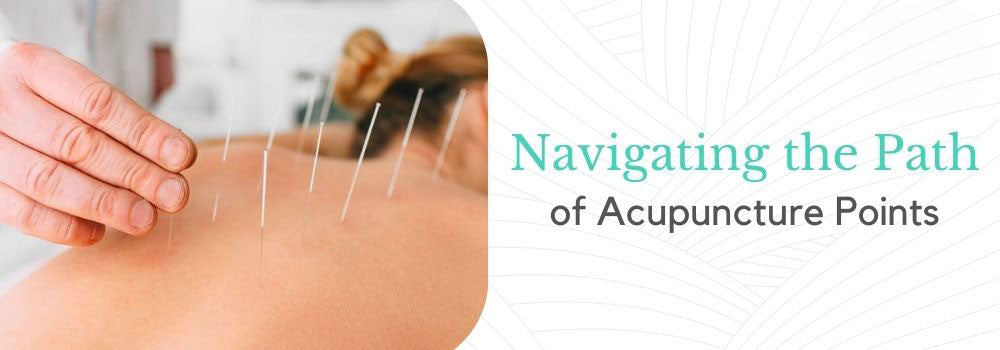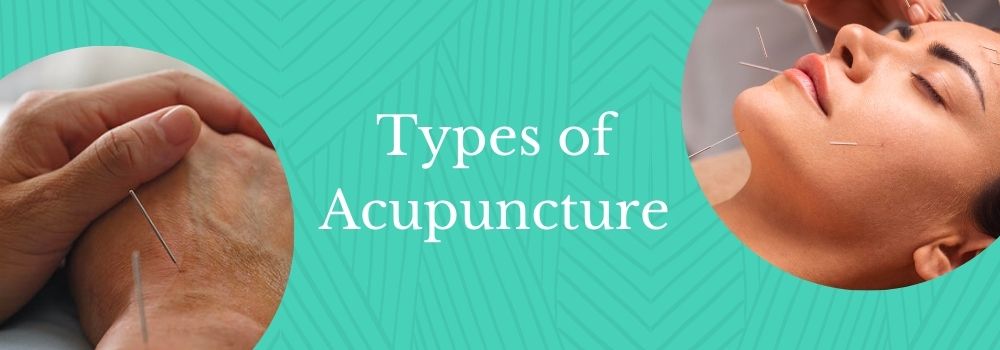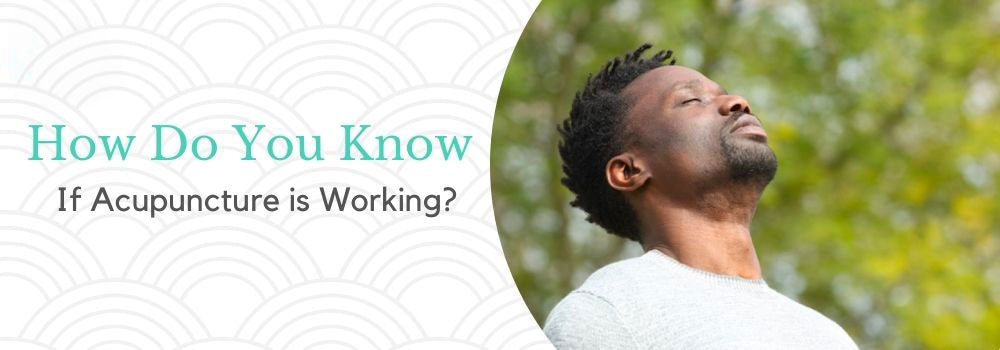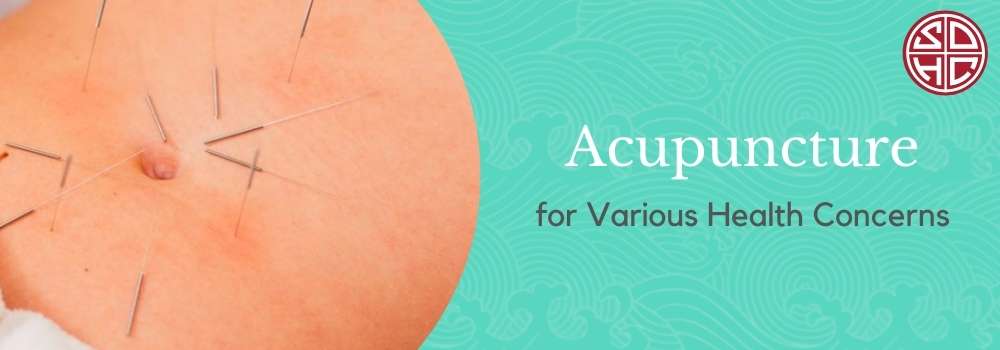Needling Harmony: Exploring Acupuncture's Path to Vital Energy & Holistic Wellness
In the intricate tapestry of optimal wellness, various ancient practices, including acupuncture, have withstood the test of time. Rooted in the heart of Traditional Chinese Medicine (TCM) and seamlessly merging modern insights, acupuncture beckons us to set forth the harmonious journey towards ultimate health, vitality, and balance.
Read on to acquire more insights, as we delve into the realm of acupuncture, exploring acupuncture's path to vital energy, achieving holistic wellness, and everything in between.
TCM Theory of Acupuncture
Acupuncture, an age-old therapeutic intervention rooted in Traditional Chinese Medicine (TCM), originated in China and has gained global popularity. Its practice is widespread, with the United States alone accounting for 10 million annual acupuncture treatments.
In TCM, acupuncture is an art that fixates on strategically inserting metal filiform needles into the body at specific acupuncture points to clear away the stagnations and regulate the qi and blood flow throughout the body. This significantly relieves acute and chronic pains and inflammations and fosters a sense of relaxation.
Certain studies also proved the efficacy of acupuncture therapy for different conditions such as headaches, lower-back pain, fibromyalgia, myofascial pain, osteoarthritis, carpal tunnel syndrome, menstrual cramp, tennis elbow, asthma, addiction, and stroke rehabilitation.

Navigating the Path of Acupuncture Points
Acupuncture points or acupoints are like the energy channels along the body's meridians, triggered by needling, pressure, or heat to address clinical problems. Each acupoint has a distinct connection to specific organs, emotions, or physical states, keeping the body's yin and yang energies balanced.
In TCM theory, there are more than 2000 acupoints present in the human body; however, here are a few most common acupoints tied to different conditions.
1. SP6 Acupuncture Point (Sanyinjiao)
SP6 is found on the inner leg, about four-finger widths above the inner calf bone, and closely aligned with the spleen, liver, and kidney meridians. It’s used to confront conditions such as digestive issues, menstrual irregularities, and poor blood circulation.
2. Ren 3 Acupuncture Point (Zhongji)
Ren 3 is positioned on the lower abdomen, one Chinese inch (also called cun) above the pubic symphysis, and four Chinese inches below the navel area. Stimulating Ren 3 acupoints can help with certain conditions like lower back pain, urinary problems, and gynecological issues.
3. ST 36 Acupuncture Point (Zusanli)
ST36 is located four-finger widths below the kneecap on the outside of your leg. It's one of the pivotal acupoints for nurturing spleen and stomach health, strengthening immunity, boosting energy, and promoting overall wellness.
4. Facial Acupuncture Points
Facial acupoints encompass several points that can be thoughtfully selected to fulfill your facial rejuvenation and skin health requirements. Activating specific facial acupoints can help regulate blood flow, stimulate collagen production, and enhance the overall appearance of your skin.
5. Acupuncture Points for Anxiety
HT7 (Shenmen), PC6 (Neiguan), and LU7 (Lieque) represent acupoints for anxiety located on your wrist and forearm. These acupoints hold a remarkable efficacy in calming your restless mind, untangling emotional turmoil, liberating you from the burdens of stress, and allowing you to face life's challenges with greater ease.
6. Acupuncture Points in Hand
Your hand has multiple acupoints that are directly linked to different body organs. Stimulating any of these acupoints can help alleviate pain in different body organs. For example, LI4 (Hegu) is located between the index finger and your thumb's base to relieve pain and headache.

Types of Acupuncture
1. Five Element Acupuncture
In Traditional Chinese Medicine (TCM), this practice draws inspiration from nature's five elements: fire, earth, metal, wood, and water. Each element corresponds to specific organs, emotions, and seasons, influencing the flow of qi all over your body.
Under this approach, practitioners generally seek to nurture balance among these elements to cultivate holistic wellness. To that end, they target specific acupoints tailored to your condition, restoring harmony between your body, mind, and spirit
2. Battlefield Acupuncture
From military medical settings to pain management clinics, battlefield acupuncture has gained widespread recognition as a robust way of instant pain relief. This technique entails the insertion of fine needles at specific ear acupoints to alleviate pain promptly and efficiently without needing medication.
3. Modern Acupuncture
Modern acupuncture is an adaptable technique that combines technological advancement with ancient wisdom for healing and wellness. Electroacupuncture, laser acupuncture, auriculotherapy, and other contemporary practices have smoothly intertwined with basic traditional principles, catering to modern needs and the changing landscape of health.
4. Western Medical Acupuncture
Dry needling is the western iteration of traditional acupuncture that incorporates needles into the muscles rather than traditional acupoints. This method is intended to limit pain and muscle restrictions.
In contrast, traditional acupuncture is a comprehensive practice that zeros in on overall wellness by balancing the smooth flow of qi, not just providing pain relief.

How Do You Know If Acupuncture is Working?
As a first-time acupuncture patient, it's imperative to note that acupuncture results might not be immediate and could take time to yield significant progress. Depending upon the severity of the condition, some individuals need more follow-up sessions for recovery.
The following indicators can assist you in monitoring the progress of your acupuncture sessions.
- A remarkable relief from acute and chronic pain in a matter of weeks.
- Significant improvement in your sleep patterns.
- No more irregular menstruation and relief from disruptive symptoms.
- Enhanced emotional well-being with a greater sense of relaxation and calmness.
- Positive changes in skin health and digestive function.
- Qi becomes more balanced, leading to better self-awareness.
- Improved mobility and functionality in day-to-day activities.

Acupuncture for Various Health Concerns
Acupuncture can help treat the following health conditions.
1. Acupuncture for Neuropathy
Neuropathy, marked by pain, weakness, and numbness, is often associated with qi and blood stagnation within the body. Acupuncture, in this regard, serves to restore imbalances, aiming to promote nerve regeneration and preservation and alleviate the symptoms of pain and discomfort linked to neuropathy.
2. Acupuncture for Plantar Fasciitis
Acupuncture is also considered an effective treatment method for plantar fasciitis. In this method, the needles are interjected into the affected area, which triggers the release of adenosine, fibroblast, and opioid, resulting in a noticeable drop in heel pain and inflammation.
3. Acupuncture for Temporomandibular Joints (TMJ)
When treating TMJ issues, where restricted jaw movements are a concern, acupuncture can offer relief by stimulating the temporalis muscle. This stimulation actually mitigates pain and facilitates painless opening and closing of the jaw, ultimately without inducing any discomfort.
4. Acupuncture for Carpal Tunnel Syndrome
According to TCM principles, Carpal Tunnel Syndrome (CTS) can be due to the stagnation of qi and blood in the wrist caused by the intrusion of cold, wind, or dampness. This often overlaps with spleen qi deficiency. However, by skillfully targeting specific acupoints, it is possible to nullify the effects of CTS, assisting in the regeneration of nerves.
5. Acupuncture for Different Body Pain
Acupuncture therapy has expanded to address a range of discomforts, including foot pain, lower back pain, and neck pain. This practice encourages the body's natural healing response by meticulously activating the specific acupoints across the body. Therefore, it offers pain relief, and fosters improved circulation, muscle relaxation, and overall well-being.
6. Acupuncture for Stress
Acupuncture treatment can trigger the nervous system to release certain neurotransmitters and neurohormones in order to alter the perception of pain in the body. This shift in brain chemistry leads to a lower level of stress and an enhancement in the functioning of bodily organs, promoting a sense of health and wellness.
7. Acupuncture for Sinus
Acupuncture, as a complementary approach, can help manage sinus issues. This practice can remarkably remove congestion, reduce inflammation, improve sinus drainage, and relieve sinus-related discomfort by precisely activating particular areas around sinus cavities and the face.
8. Acupuncture for Constipation
Acupuncture is also a way to treat constipation. In this technique, the digestive and abdominal acupoints are stimulated to regulate and address the issues related to the gastrointestinal system, bowel movements, and constipation.
9. Acupuncture for Tennis elbow
Tennis elbow stems from the strain of tendons and muscles in the forearm. The pain and inflammation due to tennis elbow can be eased by stimulating the natural healing process through acupuncture. This yields noticeable results, enhanced range of motion, and accelerated healing.
10. Acupuncture for Vertigo
For vertigo, acupuncture may help alleviate symptoms by improving blood flow, triggering the release of endorphins, and potentially leading to reduced dizziness and improved balance. Nonetheless, more research is required to establish acupuncture's effectiveness as a standalone vertigo treatment.
11. Acupuncture to Quit Smoking
When it comes to smoking cessation, acupuncture can influence nicotine cravings by targeting acupoints associated with addiction and stress reduction. Although it's a successful practice to limit smoking habits, behavioral therapy and other evidence-based interventions are also needed.
Cost of Acupuncture Therapy Sessions
The pricing of acupuncture treatment can be shaped by various factors, including your geographical location, practitioner's skills and expertise, session duration, insurance provisions, and additional services provided.
In the United States, the cost of initial visits may vary from as low as $15 to as high as $400, as per the research analysis. Nonetheless, visiting your local clinic or practitioner is strongly recommended to gain precise insight into prices, packages, and available discounts tailored to your requirements.

Side Effects of Acupuncture Treatment
Overall, acupuncture is a safe treatment when performed by a licensed and trained acupuncture practitioner. However, it may cause some potential side effects like other medical treatments. These side effects are usually mild and short-term, as mentioned below.
- Pain or discomfort from needle insertion into the skin.
- Bruising can occur if needles accidentally hit a blood vessel, but it usually fades within a couple of days without causing significant damage.
- Infection or allergy may happen from poor sterilization of needles.
- Fatigue or dizziness after a session is normal.
In order to prevent acupuncture side effects, you must consult your medical history and medications with a highly skilled healthcare practitioner, ensuring you're taking the right acupuncture treatment.
How Long Does Acupuncture Last?
The duration of an acupuncture treatment can vary depending on your practitioner's approach, individual needs, treatment goals, etc. On average, acupuncture duration lasts between twenty minutes to one hour in most cases.
However, when considering the duration of acupuncture benefits, they can last anywhere from a few days to several weeks after each session. Engaging in consistent practice of this ancient art can extend these effects, offering prolonged relief from pain, inflammation, and other discomforts.
Leave a comment
This site is protected by hCaptcha and the hCaptcha Privacy Policy and Terms of Service apply.